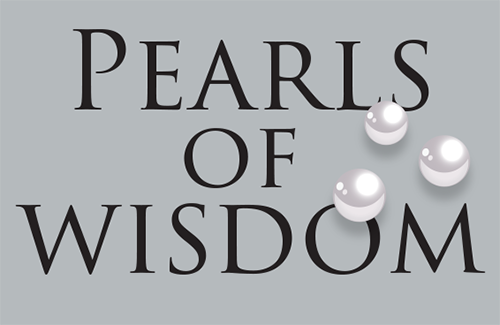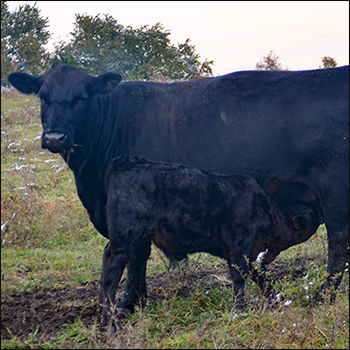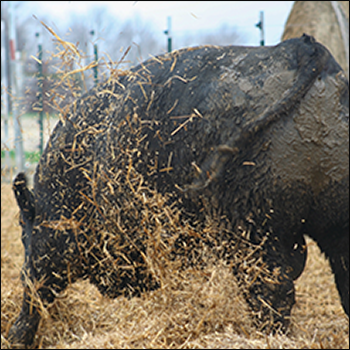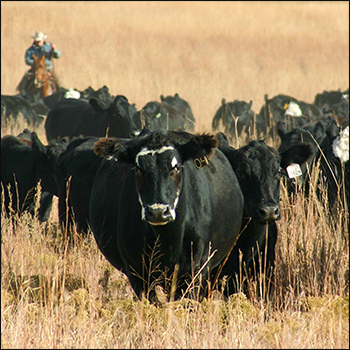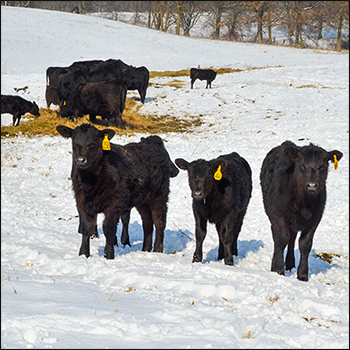In The Cattle Markets
Insights from the Cattle on Feed report.
Cattle-on-feed inventories for feedlots with a capacity of 1,000 head or more totaled 12.037 million head Jan. 1, 2022, up only 0.58% vs. 2021, but almost 3% above the previous three-year average. This is the sixth-highest inventory since the series began in 1992, and it is down 0.57% from the second-highest inventory level, which was achieved in February 2021. February 2006 had the highest inventory levels.
Heifers on feed accounted for 38.84% of total on-feed inventory; the 2019-2021 average percentage for heifers on feed was 38%. In January 2014, at the most recent cattle cycle inventory low, the percentage of heifers-on-feed inventory was 35.5%. This percentage will decrease during the initial phases of herd rebuilding as heifers are held back as replacements, and the percentage will increase during herd contraction. Current levels indicate that 2022 will see continued herd contraction. The USDA Cattle report Jan. 31, 2022, will likely show the inventory of cows that have calved and beef heifers held as replacements decrease from 36.97 million head to approximately 36.75 million head.
Placements in feedlots during December totaled 1.963 million head, up 6.4% from December 2020. Only two of the 12 recorded states reported placements that were down as compared to December 2020. Those two states were Arizona, with a year-over-year decline of 6.2%, and Iowa, down 6.4%. Because placements of cattle on feed affect future supplies, cattle prices for future months are affected more by changes in placements than by prices for current delivery.
Placements were up for all weight categories, with the exception of cattle weighing 900-999 pounds (lb.). The weight of the cattle placed changes the length of time on feed. Knowing if the decline in aggregate placements was at lower or higher weights helps estimate when the decline in placements will transform into a decline in marketings.
Marketings of fed cattle during December totaled 1.857 million head, essentially stable with December 2021. The number of cattle on feed more than 120 days was 3.923 million head, up 187,000 head (5%) from Dec. 1, 2021, but down 120,000 head (-3%) from Jan. 1, 2021. The number of cattle on feed for longer times is related to marketing as a percent of the on-feed inventory and gives an indication of how current the market is. The more current the market, the less time cattle are being kept on feed and, hence, the timelier marketing occurs. If the market is extremely current, there is less downward pressure on future prices as current inventory will not subsidize future inventories.
Overall, the January 2022 Cattle on Feed report was slightly bearish as cattle on feed and placements were reported at levels slightly higher than expected. The market continues to decrease on-feed inventories, which will provide support for first-quarter, fat-cattle prices. The increase in placements at lower weights indicates that the deferred live-cattle prices will likely bear the majority of the bearish news.
Editor’s note: Brenda Boetel is a professor in the Department of Agricultural Economics at the University of Wisconsin–River Falls and a contributor to the Livestock Marketing Information Center, which provided this article. Find more at lmic.info.

Angus Proud
In this Angus Proud series, Editorial Intern Jessica Wesson provides insights into how producers across the country use Angus genetics in their respective environments.
 Angus Proud: Scott Sproul
Angus Proud: Scott Sproul
Oklahoma operation learned wisdom of moving calving season to better suit their marketing needs.
 Angus Proud: Bubba Crosby
Angus Proud: Bubba Crosby
Fall-calving Georgia herd uses quality and co-ops to market calves.
 Angus Proud: Jim Moore
Angus Proud: Jim Moore
Arkansas operation retains ownership through feeding and values carcass data.
 Angus Proud: Les Shaw
Angus Proud: Les Shaw
South Dakota operation manages winter with preparation and bull selection.
 Angus Proud: Jeremy Stevens
Angus Proud: Jeremy Stevens
Nebraska operation is self-sufficient for feedstuffs despite sandy soil.
